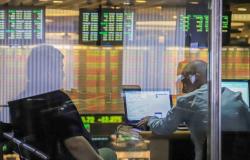Historical underestimation of wind turbine and solar panel fires continues to jeopardize the future of energy storage co-located with these assets for more efficient power generation, says the study titled “Double compensation: Addressing fire risk in co-located renewable energy projects” of Firetrace Internationalprovider of firefighting technology for the renewable energy sector.
According to the study, co-located renewable energy projects that do not apply the same precautions to solar and wind assets as they do to battery systems are only managing half of the project’s overall fire risk.
This, according to Firetrace, leaves homeowners exposed to significant expenses in the event of a fire, as battery losses can amount to $2 million and turbine losses can reach $9 million per unit. All this without taking into account the losses derived from the inactivity of the project and damage to reputation.
The problem is growing by the day, as the co-location of renewable assets is rapidly becoming one of the preferred approaches in the transition to clean energy production. In fact, the association American Clean Power reported that the deployment of co-located renewables increased by 90% in 2023.
Battery and solar installations topped the list with 10.45 GW, and US Energy Information Administration (EIA) It is expected that these projects will represent 81% of new electricity generation capacity this year. According to the report, developers have correctly identified and managed the risk of fire in battery systems.
However, this same level of oversight is not being applied to wind or solar assets, among which batteries are often interspersed in shared locations, according to Firetrace.
This is despite the fact that solar and wind infrastructure carries its own fire risks, which could have site-wide consequences if appropriate mitigation strategies are not implemented.
The report explains that, although less common than battery fires, 1 in every 2,000 turbines will suffer a catastrophic fire, and fires in solar parks are known to go underreported.
“In the past year, industry awareness of the risk of fire in energy storage has increased significantly, in part due to project delays and cancellations due to fire,” said Brian Cashion, director of engineering at Firetrace International.
The study doble compensation recommends four steps to reduce a project’s exposure to this threat: Extend battery system fire precautions to co-located assets, conduct independent fire risk assessments, become familiar with local fire regulations, and install systems. firefighting equipment, and conduct scheduled testing of the condition of operational assets to assess wear and tear.
“The only way to fully protect the infrastructure, revenue and reputation of co-located renewables is to take equal care of all project assets rather than just the most likely fire risk,” Cashion concludes.






